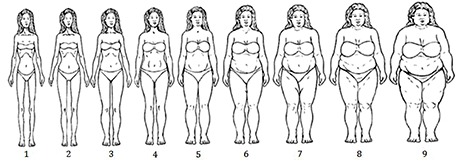
On the last Friday of October I went to the theatre. Dressed for the occasion in a dinner suit and bow-tie, I chatted with friends and family over drinks before the show. Then the bell rang to warn us of the start of the performance.
But rather than take my seat, the bell was my signal to take the stage, from where I delivered an hour-long soliloquy. At the end the audience applauded.
And then they asked questions.
This was no ordinary theatrical show, though it was — I assure you — a performance. It had been researched, written and rehearsed over many long hours and was attended on the night by many nerves. There was drama, I hope, but rather than this being the tragic story of some fictional king, the tale I had to tell was a scientific one: the discovery, development and import of X-ray crystallography. It might not have provided us with insights into the emotions that can wrack the human heart but it has helped us to understand human heart muscle, by revealing the structures of the molecules that make it tick.
Crystallography may be less celebrated than the works of Shakespeare or Stoppard, but that in itself is a tragedy. Like the best dramatists, the technique has revealed the world to us in an entirely new way. From humble origins crystallography has enabled scientists to uncover the atomic structures of salts and minerals, all manner of chemical compounds and — eventually, after dogged and heroic efforts — the molecules that make us who we are.
It is a story that is rarely told in large part because of the technical difficulties — the physics and maths underlying the technique can appear daunting. But, looked at in the right way, they are also beautiful and powerful. So I set myself the task of sharing that view with the audience. You can judge my success for yourself if you are prepared to sit through the video of the lecture (embedded below – if you're reading on a mobile device click here).
The experience of watching is, I hope, enhanced by the theatricality that the Royal Institution brings to these scientific occasions. My lecture should more properly be termed a discourse and was the latest in a series of Friday Evening Discourses that the RI has been running since they were introduced by Michael Faraday in 1826.
The sense of occasion is heightened by the connection with the past. The fact that I have given a Friday Evening Discourse at the RI will warm the cockles of my heart for the rest of my days because there is now a thread though history that connects me to previous speakers, the likes of Faraday, Huxley, Rutherford and Hodgkin*. I claim no degree of equality with these celebrated scientists — seriously, I don’t — but that slender, unbreakable thread tickles me.
I wasn't feeling particularly tickled on the night itself, especially in the run-up to my talk. The hand of history felt heavy; every so often it would jab me in the back and from somewhere I could hear the words ‘Don’t mess this up!'.
As I hob-nobbed with friends, family and the invited guests of the RI at the drinks reception beforehand, my mind kept flitting back to my notes. Despite the hours of preparation, I didn’t feel ready; the start to the new university term had been my major preoccupation through October. I had spent the afternoon working with the RI staff to finesse the details of the experimental demonstrations and running through my slides, but that only made me more acutely aware of how under-rehearsed I was. Famously, discourses are required to start precisely at 8 pm and to end on the stroke of nine; but I hadn’t had the time to do a full run-through and knew I would have to wing it.
And then the hour approached. Frank James, the RI’s professor of the history of science and my host for the evening, ushered me into a side-room so that I could have a last few moments with my notes and my thoughts, and to allow the audience to get seated.
Once they had settled, Frank and I took up our positions outside the closed doors of the theatre, waiting for the clock. All was silent but for the murmur of the audience within. In that momentary pause my nerves bubbled up in my chest. The clock struck — ting! — and immediately the door opened.
*The thread of history is also connected my to my co-bloggers Athene Donald and Jon Butterworth who have given discourses in recent months. The theatrical tradition continues at the Royal Institution next month. Come and see.
@Stephen_Curry is a professor of structural biology at Imperial College, vice-chair of Science is Vital and a director of CaSE.

















